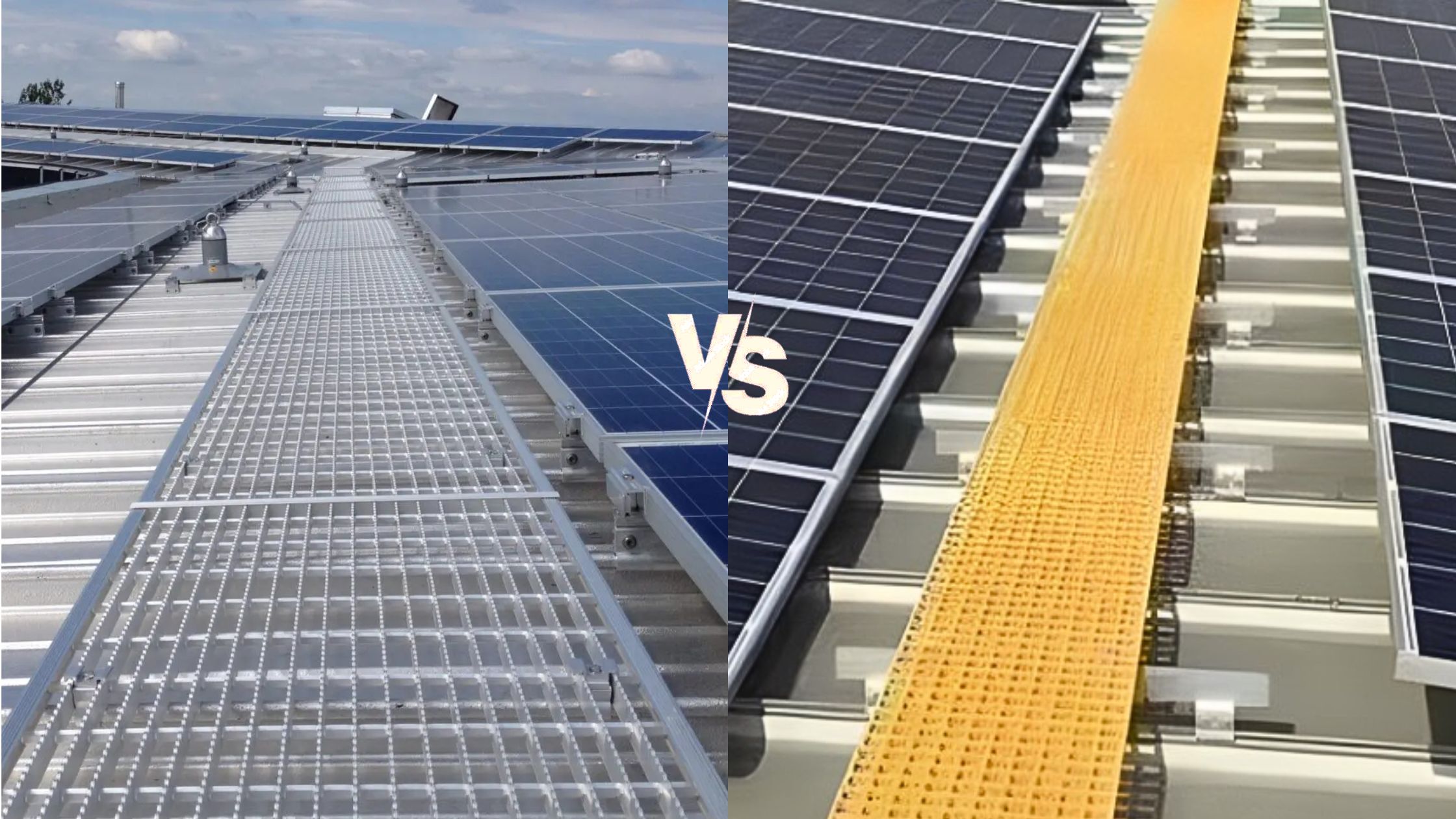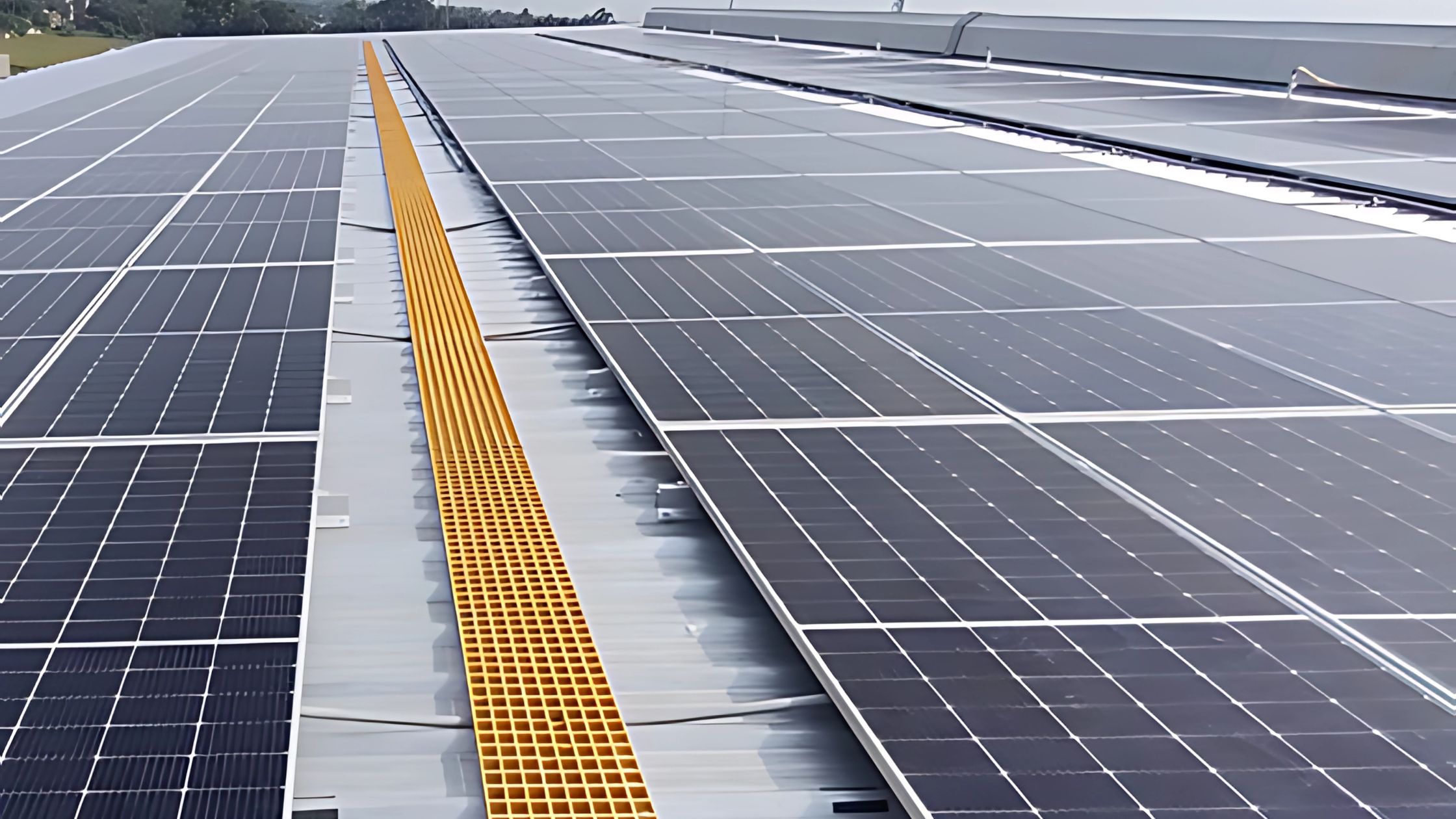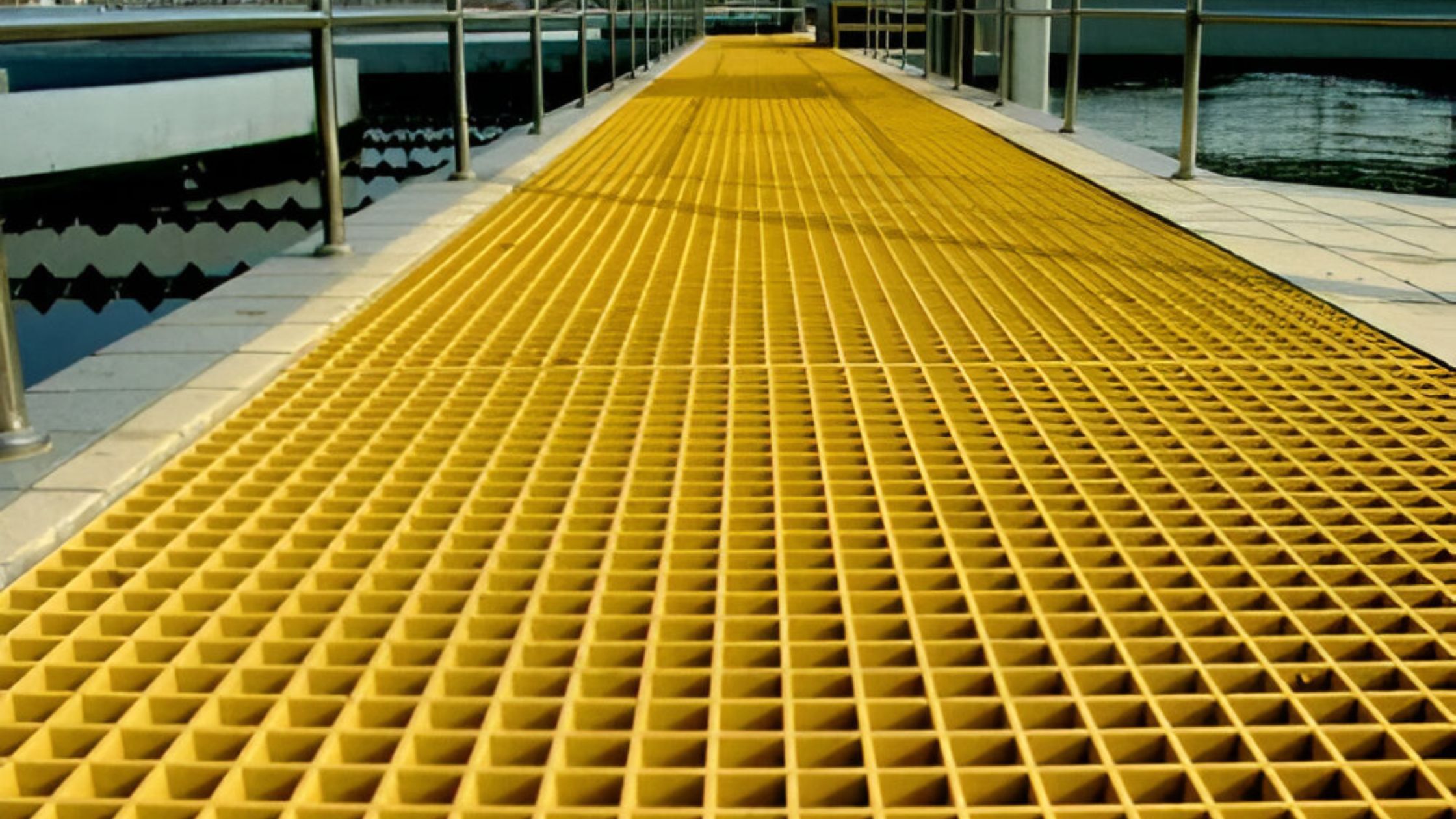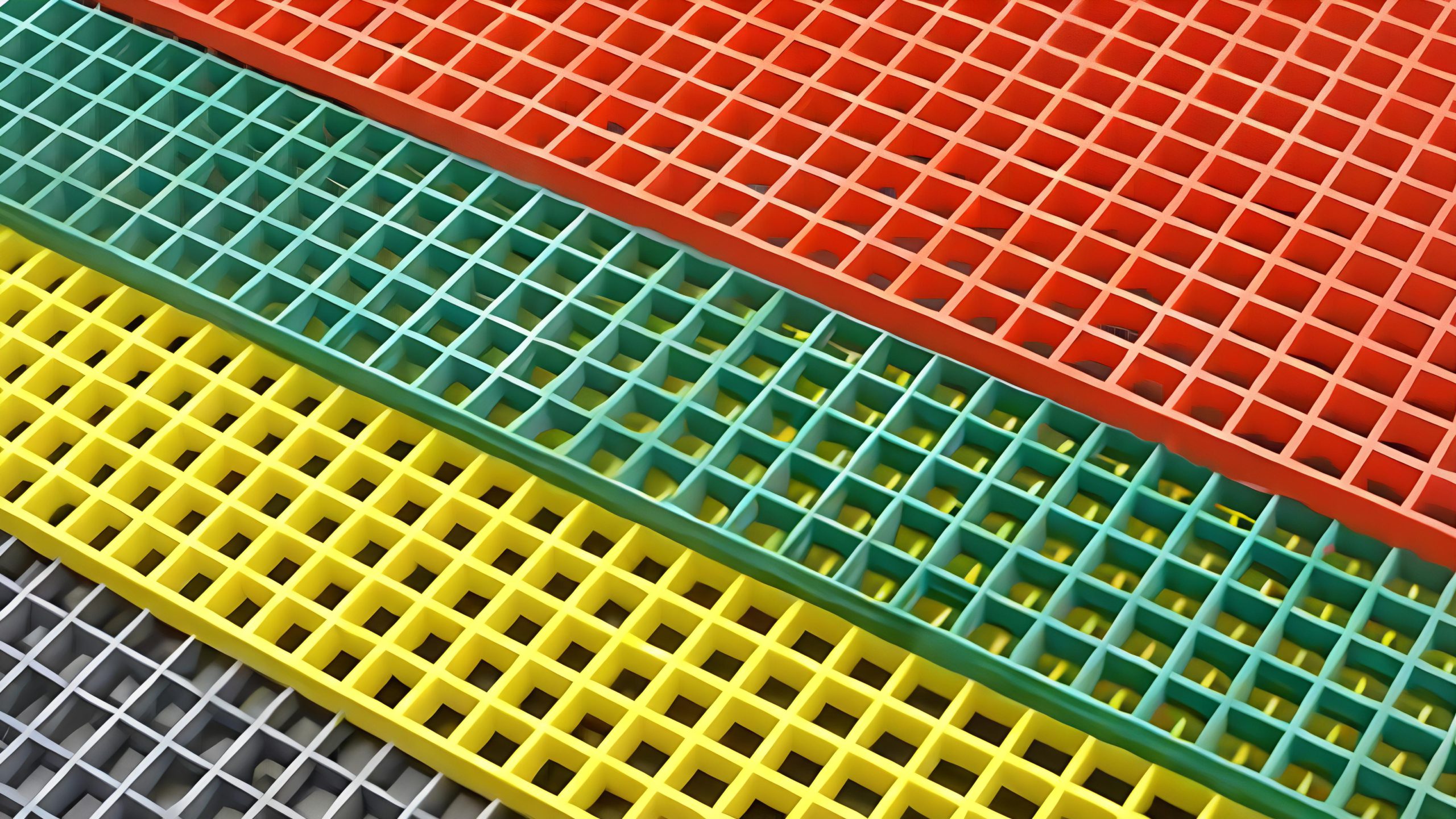The modern world is shifting towards sustainable infrastructure as cities and industries aim to reduce their environmental footprint. From renewable energy sources to eco-friendly construction materials, the trend is clear: sustainability is not just a choice but a necessity. As development continues to grow, a critical question arises: how can we make walkways, and pavements that are eco-friendly, durable, and energy-efficient?
In this blog, we explore how FRP Solar Walkways, an innovative combination of Fiber-reinforced polymer (FRP), compare with conventional options like concrete, Aluminium & Galvanized Iron. We will also analyse which of these offers a better solution from both environmental and practical perspectives.
What Is an FRP Solar Walkway?
An FRP Solar Walkway is a modern solution designed to meet the dual goals of sustainability and functionality. Made from Fiber-reinforced polymer (FRP), these walkways lay beside solar panels for their cleaning & maintenance.
Key Features of FRP Solar Walkways:
Lightweight: Easier to transport and install than traditional pavements.
Corrosion-Resistant: Ideal for outdoor environments, even in harsh weather.
Durable: Resistant to cracking, warping, and erosion over time.
Renewable Energy Generation: Solar panels within the walkway contribute to clean energy production.
FRP walkways also come in customizable grating designs, which add aesthetic appeal and functionality. These FRP walkway gratings offer excellent drainage and prevent water accumulation, ensuring a non-slip surface.
Use Cases and Applications for FRP Walkways in Rooftop Solar Projects
Solar Panel Maintenance
FRP walkways provide safe and stable access routes for technicians to inspect, clean, and maintain solar panels, ensuring optimal performance and longevity.
Safety and Accessibility
These walkways ensure that rooftop solar installations comply with safety regulations, providing non-slip surfaces and clearly defined pathways to prevent accidents.
Cable Management
FRP walkways can be designed with integrated channels for organizing and protecting electrical cables, helping to keep the installation neat and reducing the risk of tripping hazards.
Efficient Drainage
Customizable grating designs in FRP walkways facilitate excellent water drainage, preventing water accumulation around the solar panels and reducing the risk of damage due to water ingress.
Corrosion Resistance
The inherent corrosion resistance of FRP makes these walkways ideal for rooftop environments exposed to varying weather conditions, ensuring longevity and reducing maintenance costs.
Lightweight and Easy Installation
The lightweight nature of FRP allows for easier transportation and installation on rooftops without adding excessive weight, which is crucial for maintaining the structural integrity of buildings.
Enhanced Aesthetics
Available in various colors and designs, FRP walkways can be customized to enhance the visual appeal of rooftop solar installations, making them more visually integrated with the building’s design.
Renewable Energy Integration
By laying FRP walkways beside solar panels, you create efficient pathways that contribute to the overall functionality and maintenance of renewable energy systems.
Traditional Walkways vs. FRP Walkways for Rooftop Solar Projects
Energy Efficiency
Traditional Walkways: Manufacturing concrete, aluminum, and galvanized iron involves energy-intensive processes that contribute significantly to carbon emissions.
FRP Walkways: The production of fiber reinforced polymer uses less energy, thereby reducing the overall carbon footprint.
Material Sustainability
Traditional Walkways: Depend on non-renewable resources like sand, gravel, and petroleum, which are depleting rapidly.
FRP Walkways: Utilize recyclable materials and promote renewable energy, making them a more sustainable choice.
Durability and Maintenance
Traditional Walkways: Prone to cracking, potholes, and corrosion, requiring frequent and costly repairs.
FRP Walkways: Highly durable and resistant to weathering and corrosion, reducing long-term maintenance costs.
Corrosion Resistance
Traditional Walkways: Aluminum and galvanized iron can corrode over time, particularly in harsh conditions.
FRP Walkways: Naturally resistant to corrosion, making them ideal for various weather conditions.
Environmental Impact
Traditional Walkways: Contribute to the urban heat island effect by absorbing and retaining heat, and obstruct natural water absorption, leading to water runoff and flooding.
FRP Walkways: Provide excellent drainage and prevent water accumulation, reducing water runoff and mitigating flooding risks.
Installation Ease
Traditional Walkways: Heavier and more challenging to transport and install, particularly in rooftop settings.
FRP Walkways: Lightweight, easy to transport and install, making them practical for rooftop applications.
Conclusion
FRP Solar Walkways offer a superior alternative to traditional walkways, particularly for rooftop solar projects. They are energy-efficient, sustainable, durable, and environmentally friendly, ensuring safe and efficient access for solar panel maintenance while contributing to a cleaner, greener future.
As awareness about sustainable construction grows, products like FRP Solar Walkways will play a crucial role in shaping the future of urban development. Partner with FGPL, a trusted FRP walkway manufacturer, to lead the way toward eco-friendly urban development.
Contact us today to discuss your requirements and discover how FRP walkways can enhance your next project! 🌱
Also read: Benefits Of Solar Panel FRP Rooftop Walkways
Follow us on Facebook: @fibrograts







